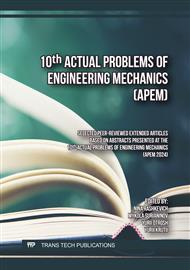p.3
p.13
p.23
p.37
p.49
p.63
p.73
p.85
p.95
Research of the Features of Stress-Corrosion Destruction of Gas Pipelines
Abstract:
The problems of stress corrosion or hydrogen blistering of gas pipelines are relevant and require careful study of the causes and factors that cause this type of corrosion-mechanical destruction of pipelines. The analysis of numerous publications on this problem revealed contradictions of information regarding the mechanism of stress corrosion and a lack of experimental materials on the substantiation of the nature and peculiarities of the nature of destruction on gas pipeline networks. Systematic experimental studies using different brands of pipe steels allowed to determine the brands of steels, which according to their characteristics are the most resistant to VBR in harsh operating conditions, including even in the most aggressive NACE environment with H2S and CO2 additives at a pressure of 10-15 atm. Moreover, the experimental studies were as close as possible to the operating conditions of pipelines of the gas transportation network. The obtained results of experimental studies can serve as a basis for developing methods of technical diagnostics and forecasting the actual state of pipelines, which will significantly prevent the occurrence of sudden destruction caused by stress corrosion. The influence of the service life of gas pipelines on the degree of flooding and microhardness of pipe steels was established, which made it possible to substantiate the embrittlement of the metal with the increase of service life. The values of impact toughness on samples with sharp and round notches and the amount of work of crack growth depending on the service life of the pipe steels were determined, which made it possible to choose steel grades characterized by the highest resistance to brittle fracture. It is shown that with the service life, the destruction occurs according to a brittle mechanism, which is confirmed by the increase in the share of the fibrous component in the fractured samples after impact tests. It was established that the lowest corrosion rate is possessed by new grades of improved steel grades 20А and 08 KhMChA.The PRFNV parameter proposed in the paper makes it possible to assess the susceptibility of pipe steels to stress corrosion cracking and provides an opportunity to regulate the corrosion crack resistance of pipelines by metallurgical methods.
Info:
Periodical:
Pages:
49-62
Citation:
Online since:
December 2024
Keywords:
Price:
Сopyright:
© 2024 Trans Tech Publications Ltd. All Rights Reserved
Share:
Citation:



